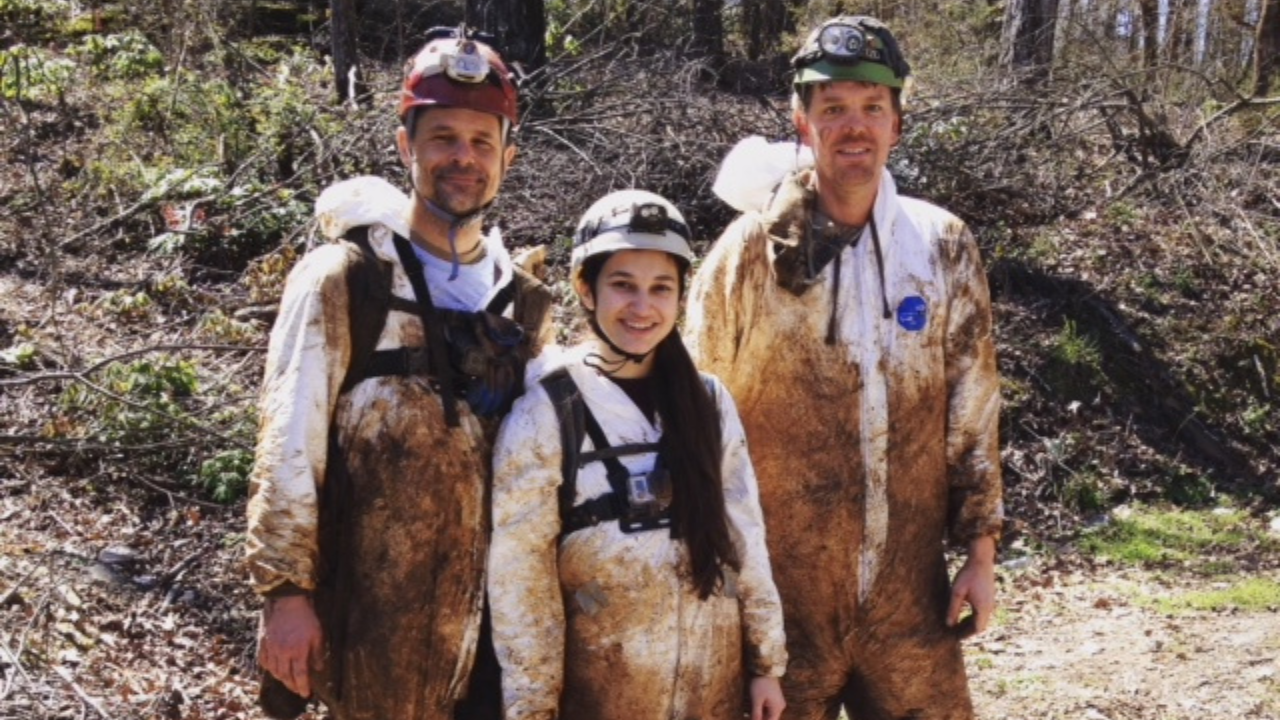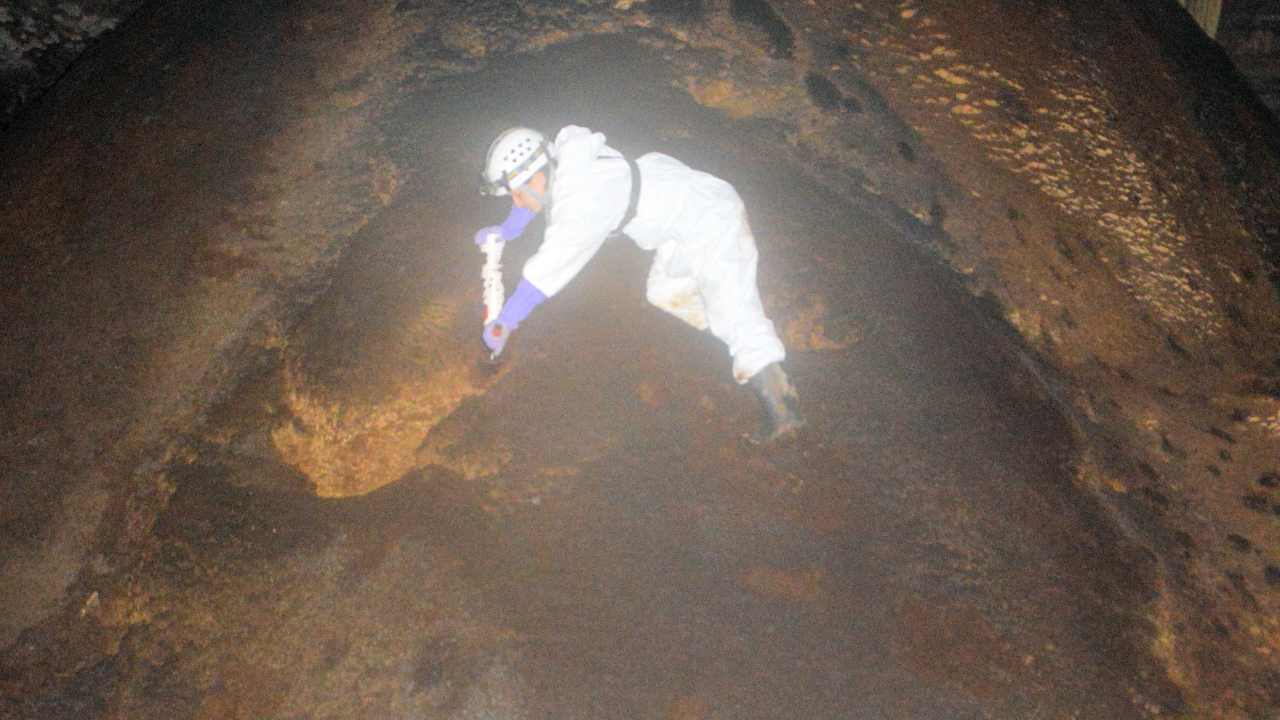content body
Inside caves across the Southeast, gray bats have been roosting together for thousands of years. Beneath them, layer upon layer of guano has quietly built up over time, forming a natural record of how the environment has changed.
For Alexandra Tsalickis, a doctoral student in the College of Sciences and Mathematics’ Department of Geosciences, those layers are more than a curiosity. They’re a scientific archive. Her research uses bat guano to reconstruct long-term records of climate, vegetation and fire.
“The gray bats in these caves have been using them for tens of thousands of years,” Tsalickis said. “We’ve had some guano that spans the entire Holocene, which is about 12,000 years back in time.”
Each layer of guano captures a snapshot of environmental change. By analyzing cores up to two meters long, Tsalickis and her team measure the chemical fingerprints that reflect shifting conditions across millennia.
“Through the use of isotopes — carbon, nitrogen and hydrogen — we can see how the climate changed over time,” she said. “We can tell if it was wetter or drier or whether the plants were more forested trees or crop-type vegetation.”
Those isotopes tell a story that begins with what bats eat. Because insects feed on plants and drink water that reflect local environmental conditions, the chemical signals of those ecosystems are passed up the food chain and preserved in the bats’ guano.
Her work has also revealed a new kind of environmental record: fire. As bats forage for insects, charcoal particles from burning vegetation stick to their fur.
“Bats have really soft fur that easily collects particles,” Tsalickis said. “When they groom themselves, they consume those particles, and that ends up recorded in their guano.”
The findings reveal that guano records the effects of smaller, human-caused fires more clearly than those of large wildfires. “They actually are attracted to areas with smaller prescribed fires because the regrowth attracts insects,” she said.
Documenting those patterns means spending long hours in the field, often deep inside caves in Alabama and Tennessee.
“It can be really fun but also an adventure,” she said. “One cave near Huntsville took four hours to get to the guano pile. You have to crawl in some sections and climb in others.”
Fieldwork is planned with the bats’ safety in mind. Tsalickis and her team collect samples only in winter, when the caves are empty, and use protective suits to prevent spreading white-nose syndrome, a fungal infection that can be deadly to bats. That same attention to detail carries through to her analyses, which highlight how human activity has reshaped ecosystems over time.
“We found that when areas are converted to cropland, it lowers insect diversity, which changes what the bats are eating,” she said. “Human activity benefits us but it also has downfalls for wildlife and ecosystems.”
Curiosity and creativity drive Tsalickis’ approach to science. Her work turns an unlikely material into a new tool for understanding how the planet has changed over time, guided by a belief that research thrives on curiosity and openness to new ideas.
Her creativity and persistence recently earned international recognition. Tsalickis received the 2025 American Geophysical Union Paleoceanography and Paleoclimatology Harry Elderfield Student Paper Award, which honors an outstanding manuscript by a graduate student worldwide. Her award-winning study used bat guano to reconstruct fire history, revealing that charcoal preserved in guano can reliably capture seasonal and prescribed fire patterns, offering a new way to understand long-term environmental change and guide conservation strategies.
“Students might typically think of rocks when they think geoscience,” she said. “It goes beyond rocks in so many ways. If you have an interest in the environment or ecology, there might be a place for you in geoscience.”







